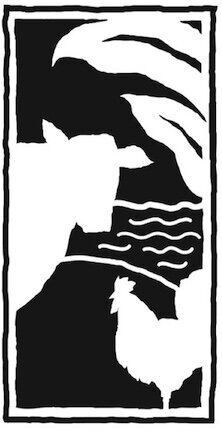What Is the Carnivore Diet?
Imagine for a moment you open your refrigerator. You see farm-fresh pastured eggs, jars of lard and tallow, steaks, liver, sausage, and pork chops – all animal-based fats and proteins. Is your mouth watering yet?
For many of our friends and customers, the carnivore diet has become a way of life. But why are people trying this controversial diet? And what do people in Hawaii on the carnivore diet really eat?
The carnivore diet is an animal-based high-protein diet which includes
Beef, pork, lamb, and goat
Chicken and other poultry
Rabbit
Eggs
Animal fats like lard and tallow
Fish, crab, and shellfish
Many carnivore dieters include low amounts of goat milk, which is naturally lower in lactose than cow’s milk and is generally easier to digest, and ghee.
Guide to Cooking with Ghee Guide to Cooking with Tallow Guide to Cooking with Lard
People start the carnivore diet for different reasons. Most people decide to try carnivore for weight loss, anti-inflammation, blood-sugar regulation, increased fertility, and/or mood stabilization.
Not everyone’s approach to the carnivore diet is the same. It can act as an elimination diet since you’re not eating any sugar, processed foods, or complex carbohydrates. When using carnivore as an elimination diet, you would reintroduce a food and see how you feel. If that reintroduced food doesn’t make you feel good, you know to avoid it in the future.
Others find their chronic illness resolved after going carnivore and they can’t imagine going back to their old more diverse diet. One homesteader friend turned to the carnivore diet after traditional medications weren’t helping her chronic disease. She was debilitated with migraine headaches, early onset glaucoma, and low energy. After one year of a strict carnivore diet, she no longer has migraines, her vision is completely corrected and she’s absolutely flourishing on her farm. She was even able to start a new career as a real estate agent and she’s crushing it! After speaking with her doctor they’ve agreed the carnivore diet lifestyle is the right fit for her in the long run.
One of the biggest distinctions with my homesteader friend is that she raises most of the meat she consumes. It must be said that not all animal proteins are created equal. Grass-fed and pasture-raised meats are healthier for you and are more nutrient-dense when compared to grain-fed meats. Check out the stats here. That means you can eat less meat without compromising nutrition.
4 Reasons You Should Eat Pasture-Raised Meats
So, what do people in Hawaii on the carnivore diet eat? Many buy grass-fed & grass-finished beef in bulk like our beef share. It’s a great way to have a variety of cuts at your fingertips making it easy to stick to the diet.
Pasture-raised eggs are another staple. Especially when eaten raw, it’s important to know your farmer and their farming practices. Joining our meat CSA can also offer you a variety of meats each month like beef, primal ground, lamb, chicken, rabbit, and eggs to make going carnivore more exciting. Then there are the people who get a beef share AND join the meat CSA so they’re never caught wondering what to have for dinner.
Wild pigs and sheep on the island offer a great opportunity to add wild red meats to your carnivore diet. Fishing or purchasing wild-caught fish from local fishermen brings even more diversity to the carnivore diet in Hawaii.
The Carnivore Diet is “controversial” because it omits grains, vegetables, and fruits. Plus, not all medical providers agree on the benefits of going carnivore. Everyone reacts to the carnivore diet a little differently, so it’s important that you talk to your trusted medical provider and listen to your body if you decide to try this high-protein animal-based diet.
Whatever your approach is to going carnivore on the Big Island, we’re here to support you with the best grass-fed & grass-finished beef, and pasture-raised meats!
Click here to shop our full line of meats at our Farm Store
The information provided on the site is for educational purposes only and does not substitute for professional medical advice.


